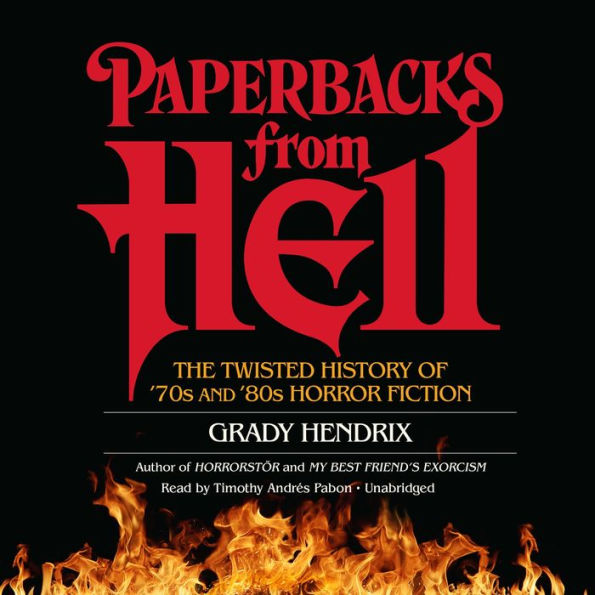07/31/2017
Hendrix, whose novel Horrorstör brought the macabre to big-box Scandinavian furniture stores, returns with this playful history of what he calls the golden era in horror fiction. The book covers the period roughly between the publication of Rosemary’s Baby in 1967 and the release of the film version of The Silence of the Lambs in 1991, the success of which Hendrix says convinced publishers to abandon the label “horror” in favor of “thriller.” With an authoritative but jocular tone, Hendrix examines notable authors, cover artists, and themes. The fun of the book comes from the ample, and invariably lurid, cover-art reproductions included, and the truly ridiculous variety of story lines discussed (in addition to vampires and werewolves, killer rabbits, moths, and embryos make cameo appearances.) Hendrix tracks shifting trends in subject matter, from the Satanic and occult fiction of the late 1960s and early ’70s to the haunted houses of the mid-’70s to the serial slashers of the ’80s. A solid portion of the text is devoted to plot synopses, but these—beginning with one featuring “Nazi leprechauns who enjoy S&M”—are never boring. Like some malevolent force in one of his beloved novels, Hendrix’s geeky enthusiasm is infectious. Unwary readers might find themselves drawn to musty stacks of old paperbacks. Beware. (Sept.)
If you are ever wondering where your horror obsession comes from, then Grady Hendrix is here to the rescue. Let’s open the cellar door and take a deep dive into the many questions you had about horror novels but were afraid to ask. Discover how Grady decided what books belonged in Paperbacks from Hell and learn more about the history of the horror genre.
Prepare yourself for all that Spooky Season promises with a nightmarish TBR list. Whether you’re looking for paperbacks you might have missed or new releases that will have you locking all your doors, start here, add in titles from 101 Horror Books to Read Before You’re Murdered and make sure you turn on all the lights while reading these screamingly good horror novels.
It’s a simple fact: Vampires are hot. And, because of this, the literary world has gifted us with endless and timeless classics about the undead. We’ve got Dracula, Thomas Raith, Matthew Clairmont, Edward Cullen — there’s even Bunnicula! Spooky season would not be complete without the pale, cold-as-ice bloodsuckers that we know and love, which […]
Another year has passed, delivering us a terrible bounty of new horror books to terrify us on quiet nights. Taken together, 2017’s best horror books were a little more introspective than last year’s, striking at the heart and bringing us visceral scares, from Scott Thomas’s psychologically affecting house of horrors in Kill Creek, to the raw […]
What were you like as a kid? What was your connection to video games? I assume I was like most kids who came of age in the late 70s and early 80s—I loved Star Wars, Indiana Jones and getting into trouble with my brother and my cousins. Video games were an early obsession of mine. […]



